?
Add the operand MF-FCUR MF-DISC to the Field Curv and Distortion
Increase the operand MF-RELI in Relative illumination
Lateral Color difference
Axial Chromatic Focus Shift
The Dispersion Diagram improves the speed of refractive index calculation
Glass Map. Glass map
The Glass Library CDGM has been updated to the latest version
?
?Field Curv and Distortion

Add the evaluation function operand MF-RELI to the Relative illumination
CAXCAD uses a fast calculation algorithm, and the relative illumination is about 20 times faster than the calculation speed of ordinary optical software.
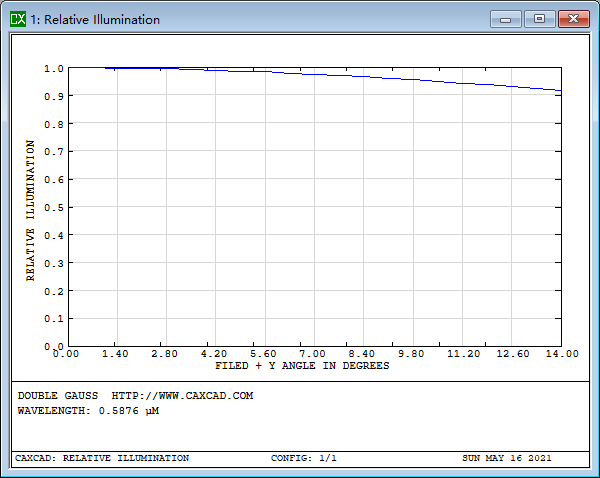
??Lateral Color
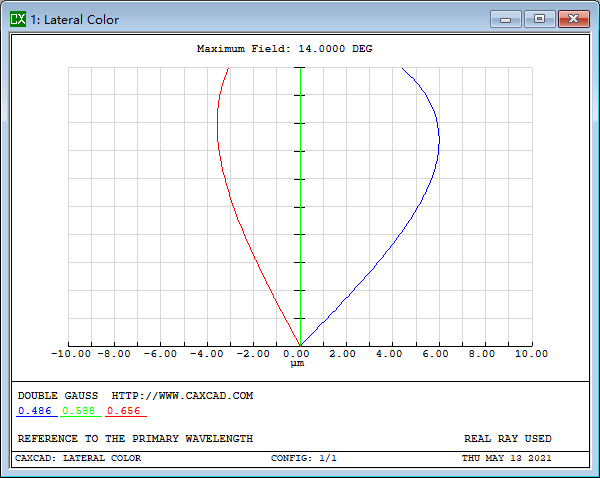
?Chromatic Focus Shift

Dispersion Diagram?
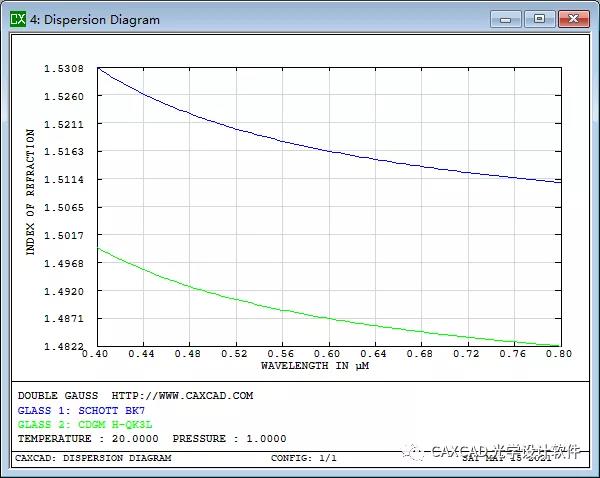
A comparison of the latest CDGM H-K9L and SCHOTT BK7 glasses shows that there is almost no difference between the two glasses in the visible light band.
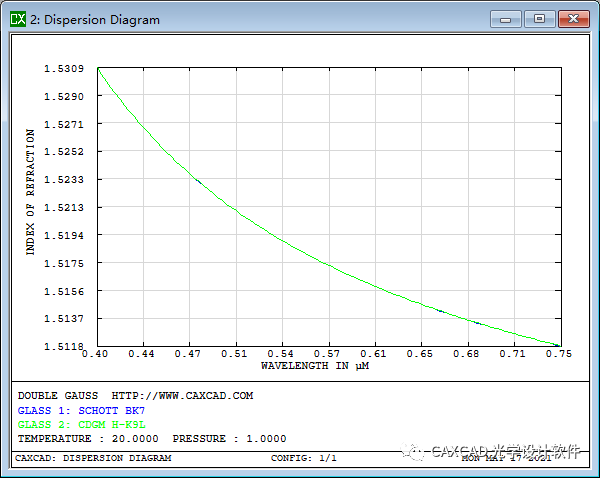
But in the near infrared band above 1um, the difference is obvious. This is consistent with the analysis of glass substitution in actual use, which plays a key role in the designer's decision.
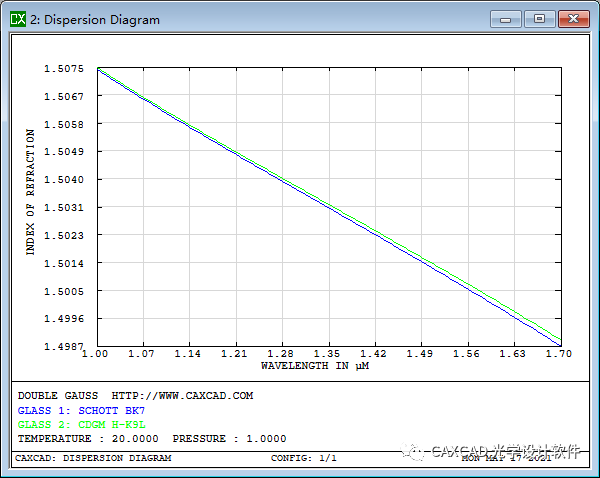
Glass Map

CAXCAD's glass diagram supports specifying the glass state and focus glass
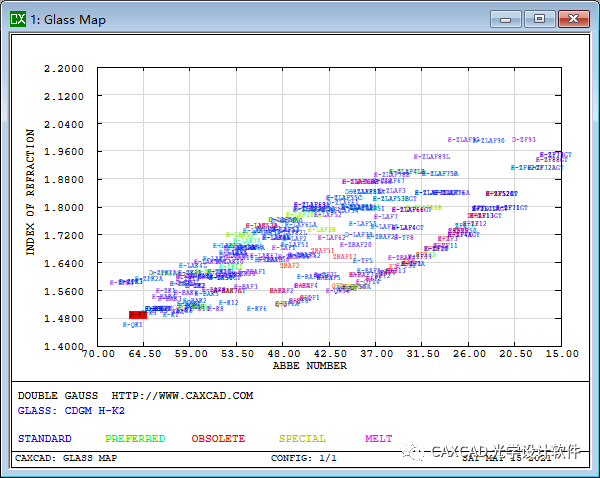
?
For more information, please pay attention to CAXCAD official account
?
?
]]>Automatic Design module Auto Design integration, users do not need to manually in-depth, can complete the evaluation function construction
Added MTF optimization operand MSGT MTGT MAGT, no need to set boundaries to complete MTF target optimization
Update the thermal analysis algorithm
Updated the speed of glass library reading
The new CAXCAD optimization module is presented below
Optically define MF targets
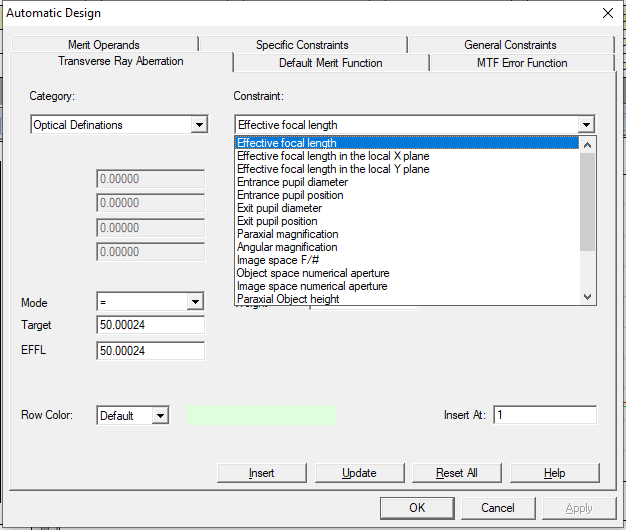
Aberration control MF target

Paue MF targets
Real light pursuing MF target

All targets support boundary range control
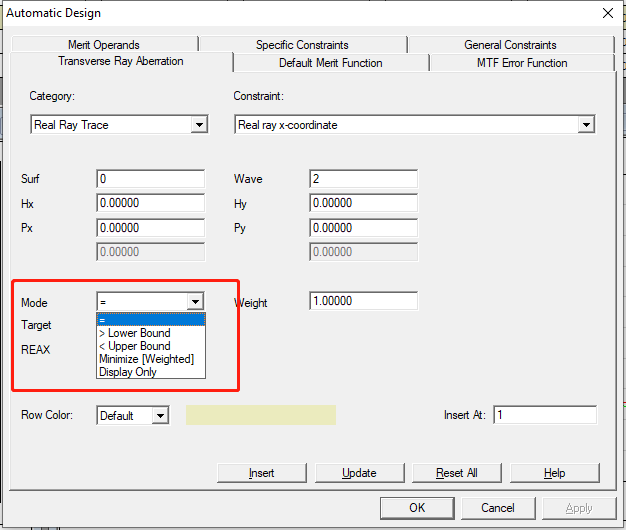
MTF automatic target setting
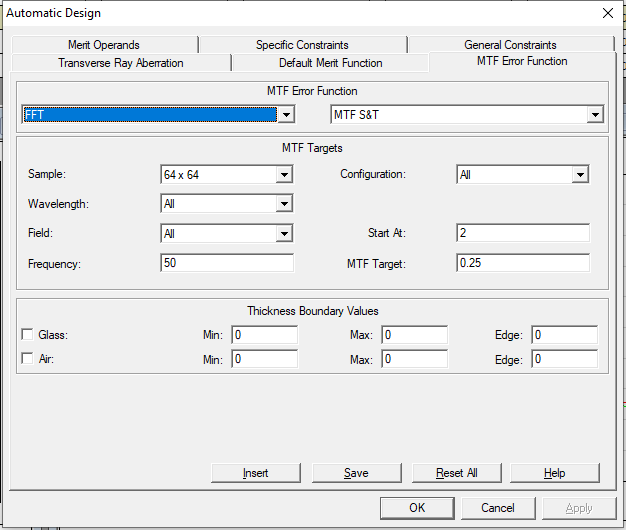
Automatically set MAGT MSGT MTGT, all operations without manual input

Here is a Cooke lens for demonstration

SPOT SIZE MTF after optimization
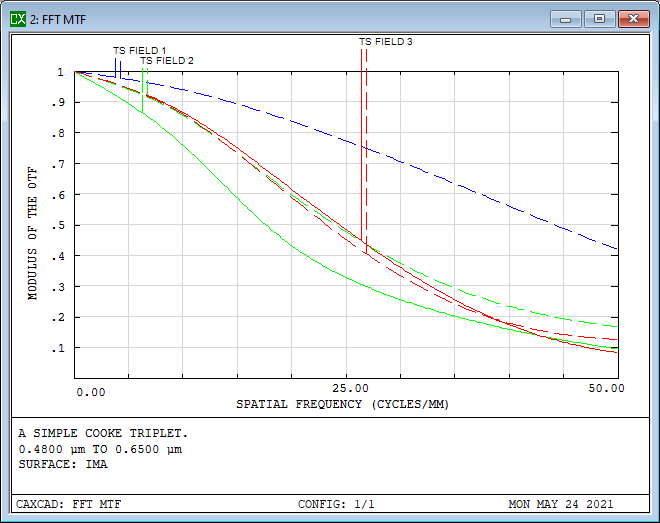
The optimization time is 1 minute, and MF is reduced from 0.1 to one-tenth of the original
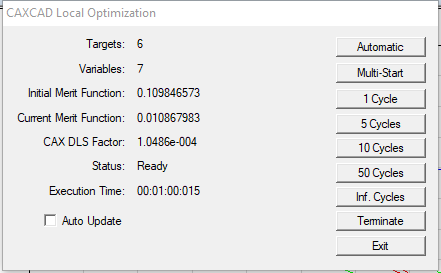
Optimized MTF

The optimization results are well verified
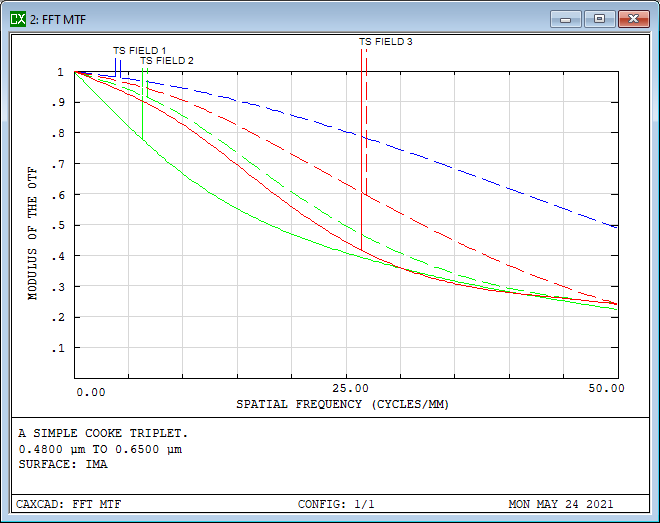
Optimize L3D after completion
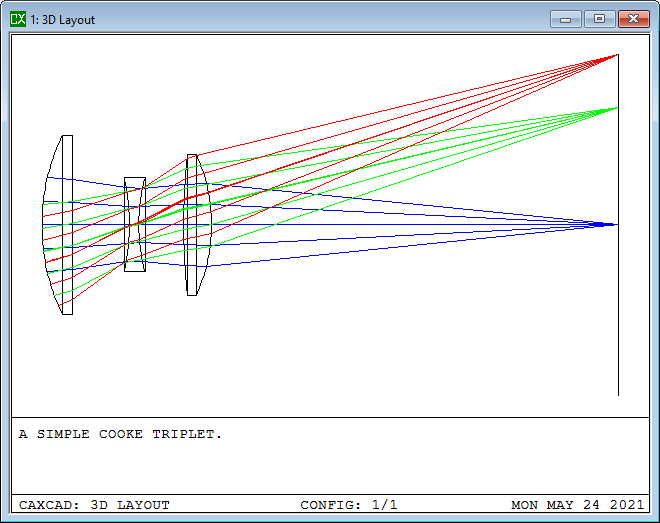
?
]]>Open the eye protection background
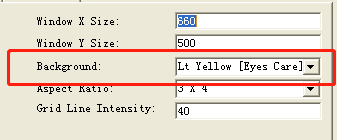
Geometric PSF
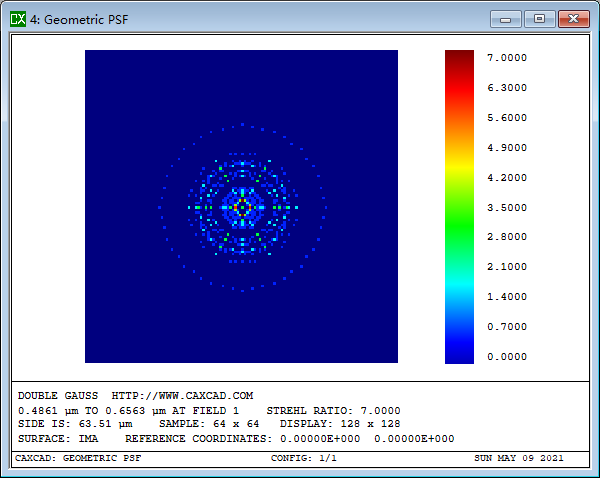
Geometric MTF
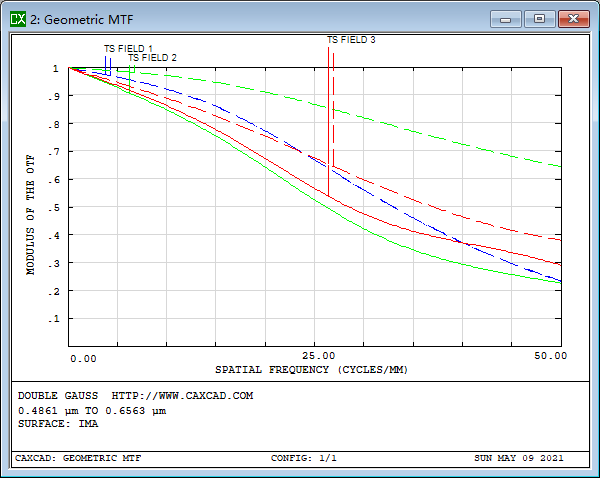
Geometric MTF optimizes operands

FootPrint updated to add background mesh

Added Longitudinal Aberration
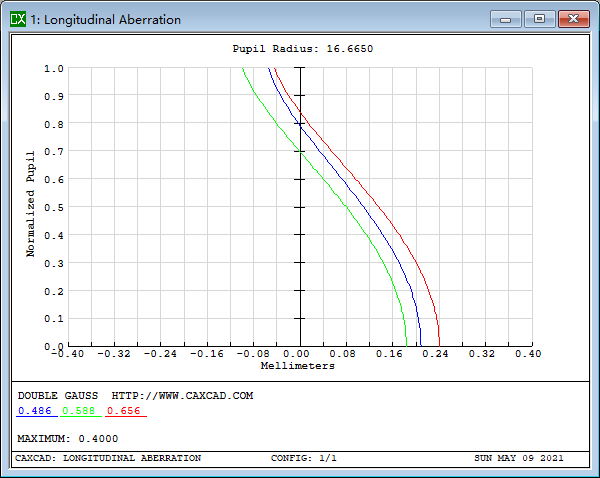
- Updated Wavefront algorithm to improve speed and support Surface Plot and Surface Color
- Updated Vignetting algorithm, faster and can be used at the same time as Ray Aiming.
- Update Ray Aiming With Aiming field caching technology, light does not need to iterate, faster
- Update 2D display, update 3D display to support spatial 3D rotation, update 3D display multiple structures
- Various analysis features support color weights
- The calculation of coordinate breakpoint surface is updated to support the calculation of off-axis surface aperture SDIA
- Updated WFNO to support off-axis calculations
- Updated PSF algorithm, new increase spectrum algorithm,
- PSF color chart adds color contrast bars and data
- Add PSF Surface Plot display, Surface Color
- Added FFT PSF core operand: Stryer than MF-STRH, faster optimization
- Updated FFT MTF to support full band, full wavelength MTF calculation.
- The core operand of the tolerance analysis has been completed
3D LAYOUT supports rotation

Coordinate breakpoint under 3D LAYOUT: five inverse system
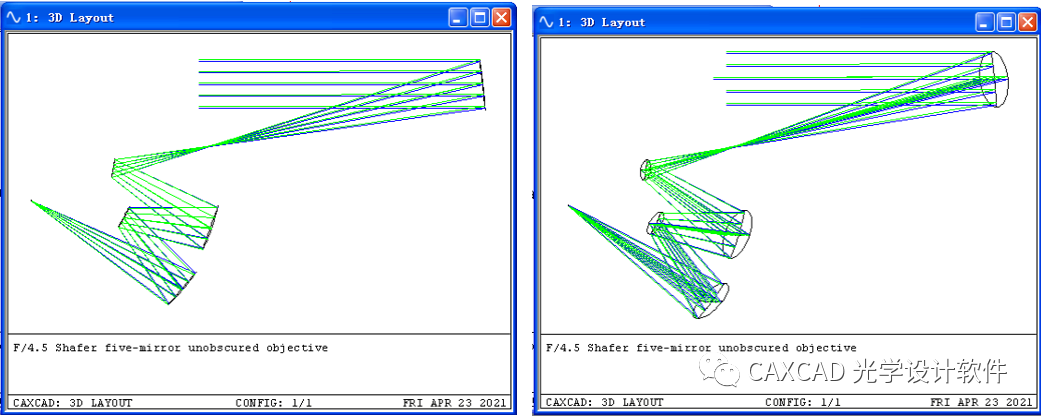
3D LAYOUT multiple structures
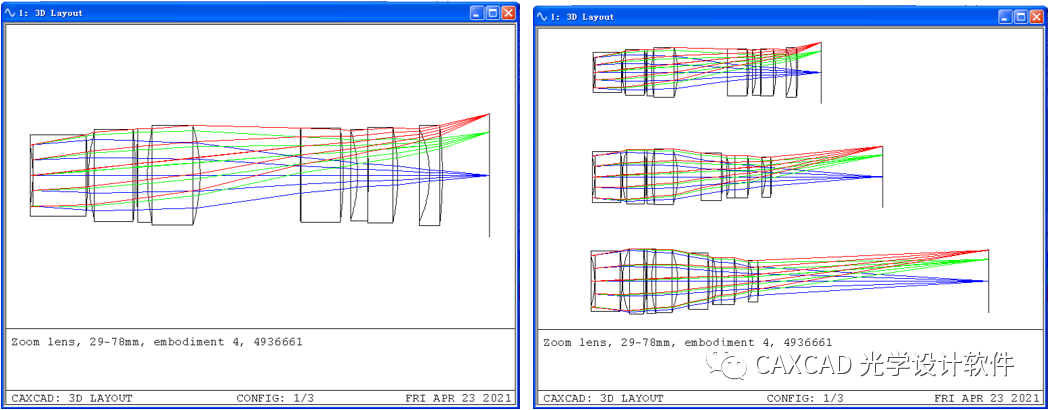
Wavefront Map
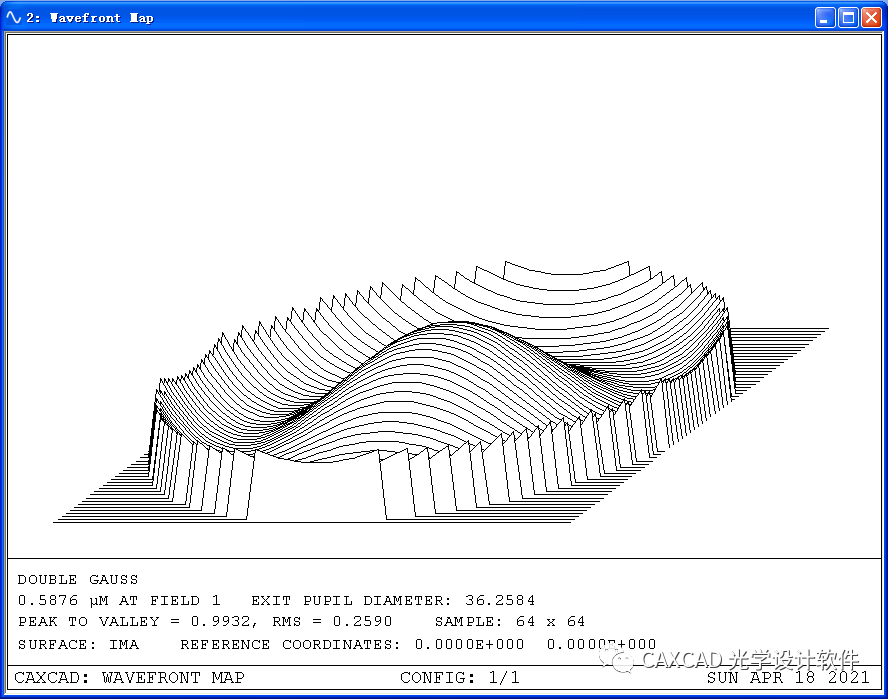
Wavefront Map contour color
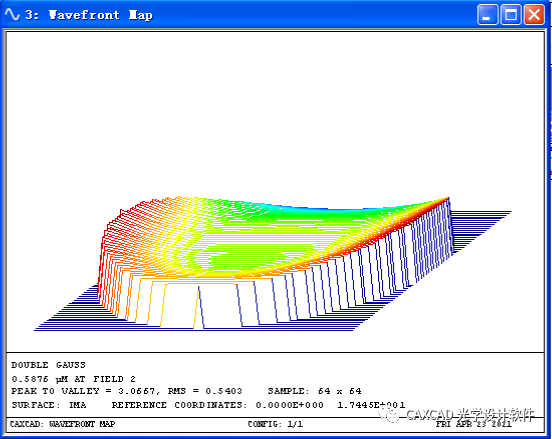
PSF Surface Plot supports direct display of STREHL
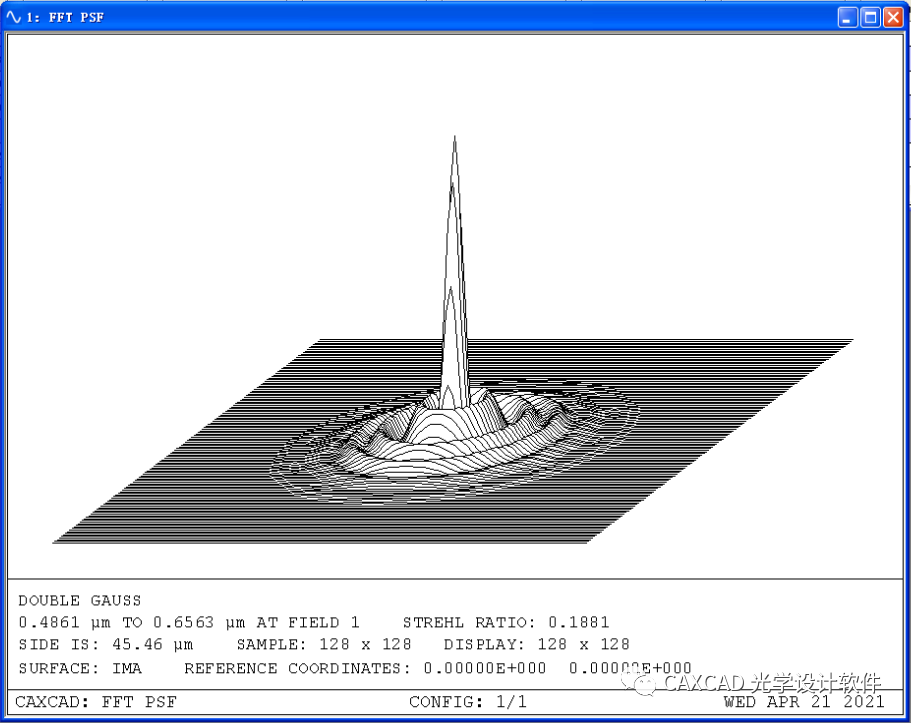
PSF color Surface Plot
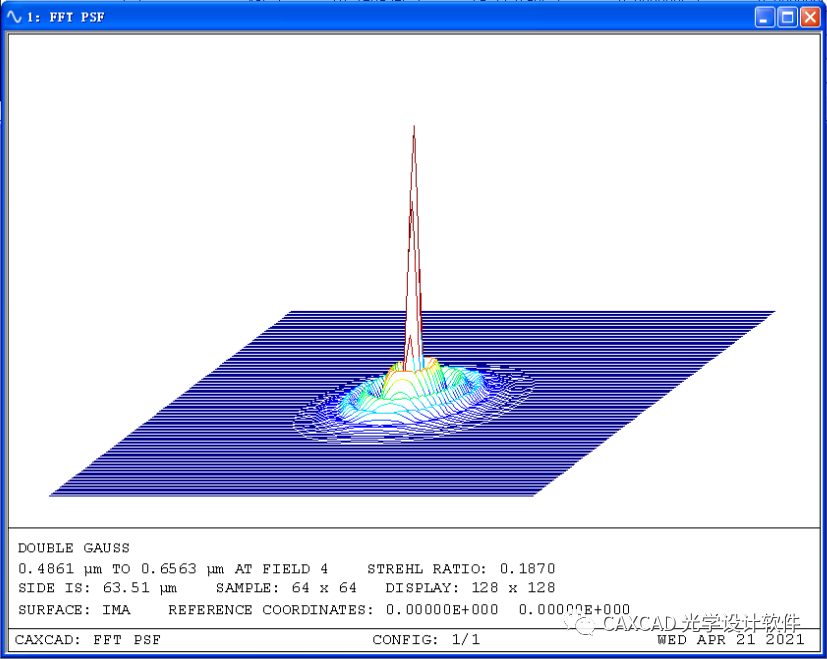
PSF pseudo-color picture adopts multi-color progress display
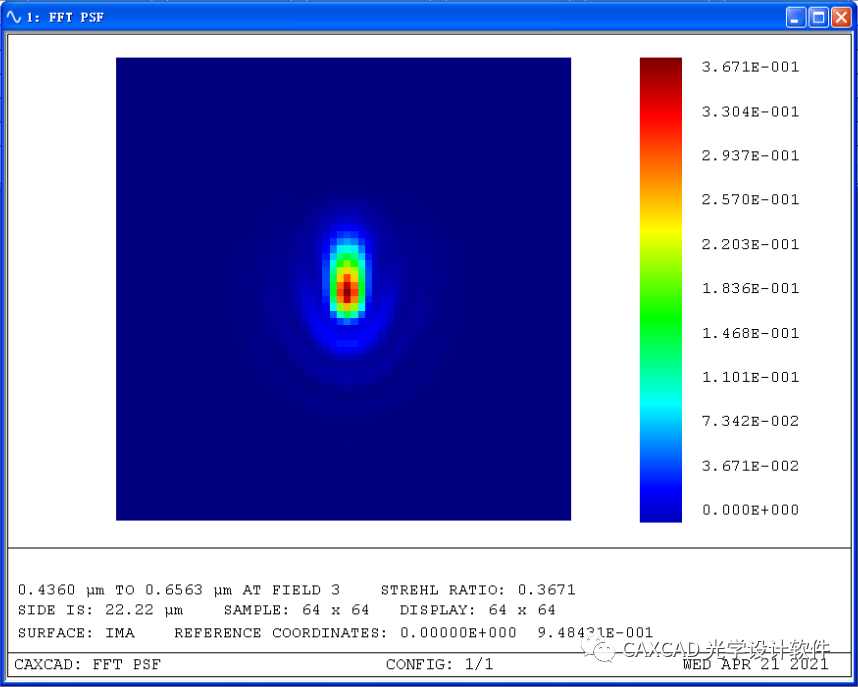
Aiming field caching technology is adopted
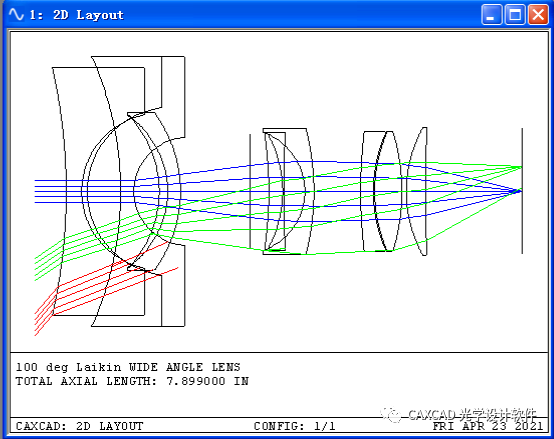
?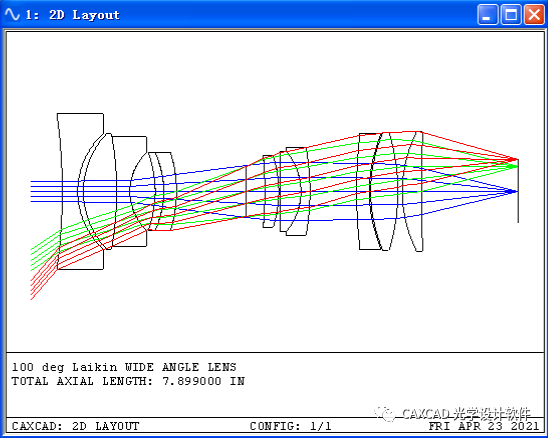
?

MTF added full field of view full band
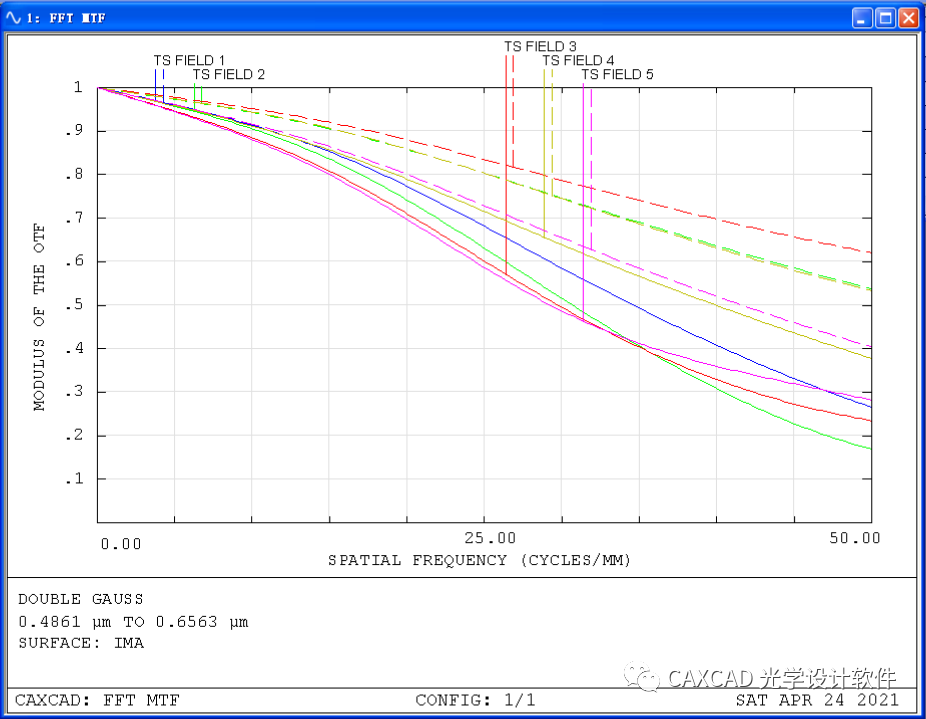
Stay tuned for more information

CAXCAD's new eye care interface

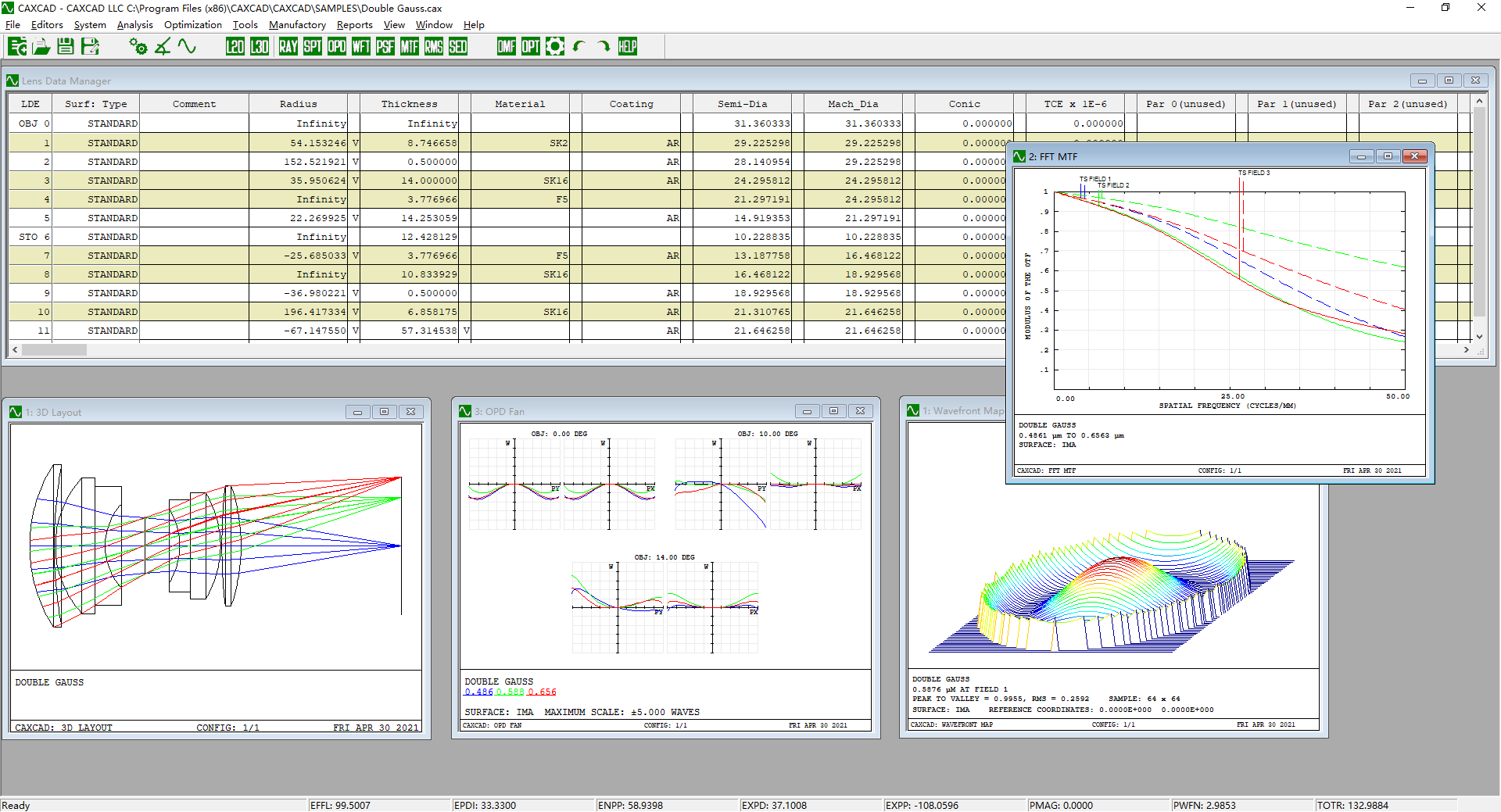
Complete FFT MTF
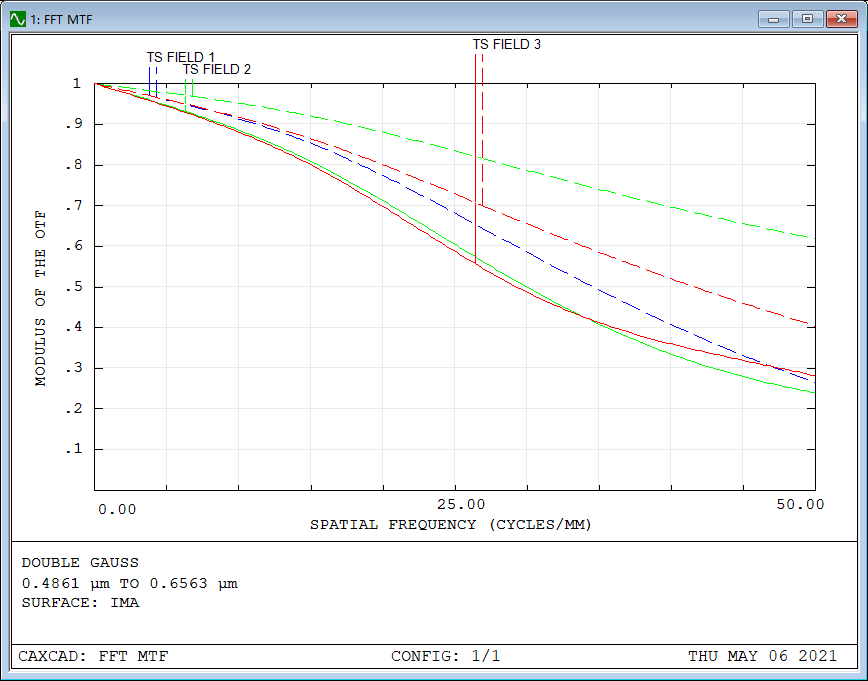
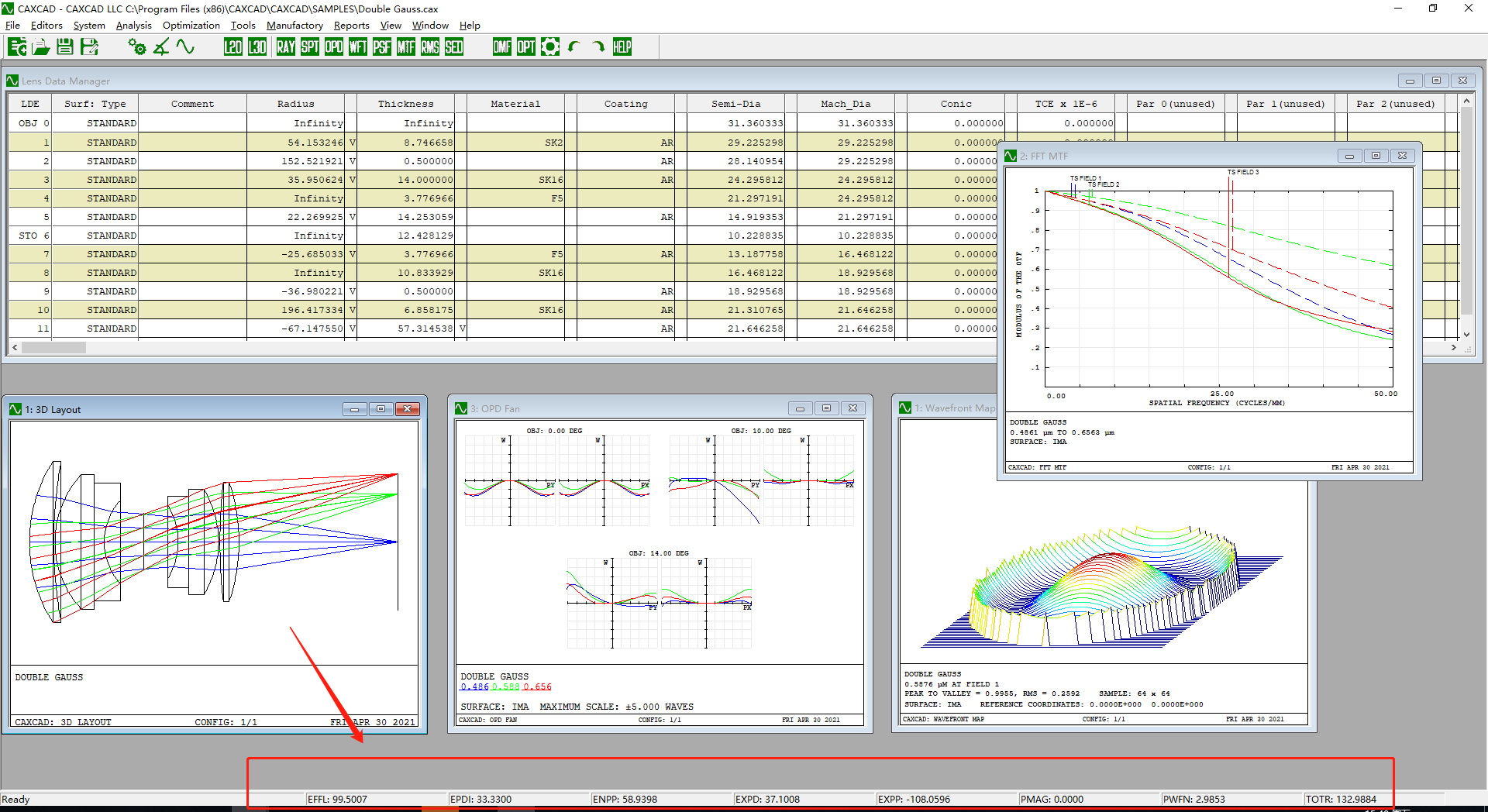


?
For more information, please follow CAXCAD official account.

?
Of course, the accuracy of simulation is the most important, and the simulation parameters of CAXCAD optical design software have been certified by multiple parties, accurate and effective!
 |
 |
 |
 |
 |
 |
?
LIGO heard gravitational waves, ripples in space-time, for the first time in human history in 2015. The upgraded LIGO will be called Advanced LIGO Plus, or ALIGO+, and is expected to start operating in 2024.
?
Frans Cordova, director of the National Science Foundation, said the upgrade will guarantee LIGO's continued leadership in gravitational wave science for the next 10 years.
?
Gravitational waves will be "heard" every day
?
Since 2015, LIGO has successfully detected 11 gravitational wave events, 10 from black hole merges and one from neutron stars. After the upgrade of ALIGO+, the detection capability will be further enhanced, and the detectable space will be 7 times higher than the present.
?
?
?
LIGO director David Reitz, a professor at the California Institute of Technology, said that with ALIGO+, it will be possible to detect gravitational waves generated by black holes on a daily basis. The detection of gravitational waves generated by the merger of neutron stars, although only once so far, will become more frequent in the future.
?
This is mainly because the upgraded ALIGO+ will apply quantum compressed light and new mirror coating technology.
?
"The current design sensitivity of LIGO is dominated by quantum noise, and quantum compressed light is used to reduce quantum noise." Miao Haixing, a member of the LIGO scientific cooperation organization who teaches at the School of Physics and Astronomy at the University of Birmingham in the United Kingdom, told Science and Technology Daily.
?
According to Miu Haixing, quantum compressed light can be understood as a "redistribution" of quantum fluctuations. ALIGO+ will apply frequency-dependent quantum compressed light, that is, to simultaneously reduce the low-frequency quantum radiation pressure noise and the high-frequency quantum shot noise, with the goal of doubling the amplitude sensitivity of ALIGO+.
?
As for the new mirror coating technology, Miu Haixing revealed that the material of the coating will not change, but through the new processing technology, the thermal noise of the mirror coating will be greatly reduced.
?
"This is equivalent to ALIGO+ using better 'noise-canceling' headphones, so we can hear clearer 'musical details' and weaker' mysterious songs. '" Fan Xilong, a member of LIGO scientific cooperation organization and a special researcher at the School of Physical Science and Technology of Wuhan University, said in an interview with Science and Technology Daily.
?
It could challenge theories of stellar and population evolution
?
"LIGO will definitely detect more and more gravitational waves over time. We can do this by increasing the sensitivity of the detector, rather than just observing and waiting." Professor Wang Yixiong of the University of Glasgow, a member of LIGO scientific Cooperation organization, said in an interview with Science and Technology Daily.
?
?
?
According to Wang Yixiong, ALIGO+ will detect the binary neutron star merger at a distance of 300 million parsecs (Mpc), while the detection distance of the binary black hole merger is more than half the radius of the universe.
?
"This means that ALIGO+ can detect more distant and numerous signals from the same type of gravitational wave source, such as the gravitational waves generated by the merger of binary neutron stars." Fan Xilong said.
?
Fan Xilong told reporters that more signals of the same kind can allow scientists to understand these systems from a statistical point of view, such as the mass distribution and spin distribution of binary neutron stars, like a "census" of relevant celestial bodies in the universe. With the help of statistical information, combined with stellar and population evolution theory, we can predict the evolution process of binary neutron stars.
?
At the same time, more distant gravitational wave signals have a greater chance of encountering other objects in the universe, resulting in strong gravitational lensing of gravitational waves. By studying this phenomenon, it will be possible to make important progress in a series of important questions such as the speed of gravitational waves, the Hubble constant, and the distribution of dark matter in galaxies.
?
"What I personally look forward to most is that ALIGO+ can observe more massive binary black holes at greater distances, so that the initial assumptions of a series of star and population evolution theories about binary star proportions, initial mass functions, etc., may be challenged." Fan Xilong said.
?
According to ALIGO+ project leader Michael Zucker, ALIGO+ will achieve the same number of detections in less than one week as it has in the past three years. In Fan Xilong's view, with the continuous upgrading of gravitational wave detectors, gravitational wave signals also need more detailed and complex data processing processes to mine.
?
"The rapid processing of large numbers of gravitational wave signals in the future will be a new area of research." Fan Xilong told the Science and Technology Daily reporter that in addition to using faster computers and improving the speed of traditional algorithms, machine learning technology has also begun to play a big role in the field of gravitational wave data processing.
?
Source: Science and Technology Daily
?
?
]]>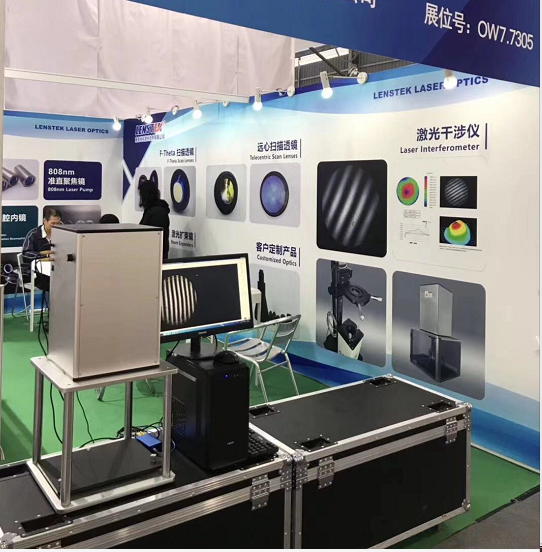
LASER World of PHOTONICS CHINA is Asia’s leading photonics exhibition. It revolves around innovative products as well as their industrial solutions and applications, which reflect actual developments in the industry around the world.

Interferogram Tab: Realize real-time acquisition of interferogram, open ellipse range selection and fringe calculation, etc.
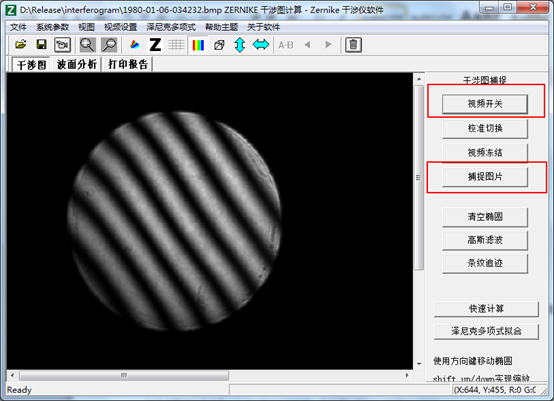
?Graphic interface
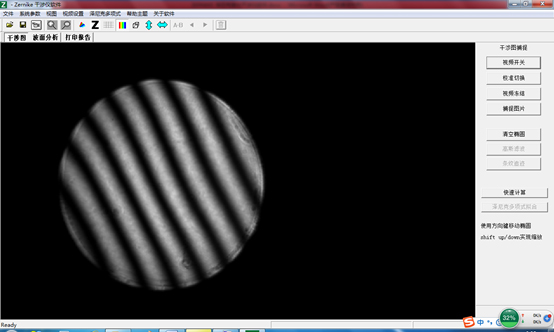
After image capturing, when 5 points are selected on the edge of the interferogram, an ellipse will appear, and the ellipse can be corrected by adding more points.
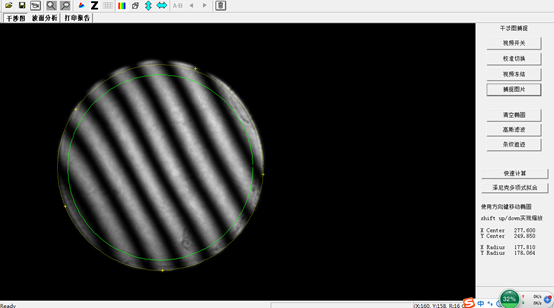
There will be a small green ellipse in the figure. This is the calculation range. The default calculation range of the software is 90% of the ellipse range.?
This parameter can be modified in the parameter settings.
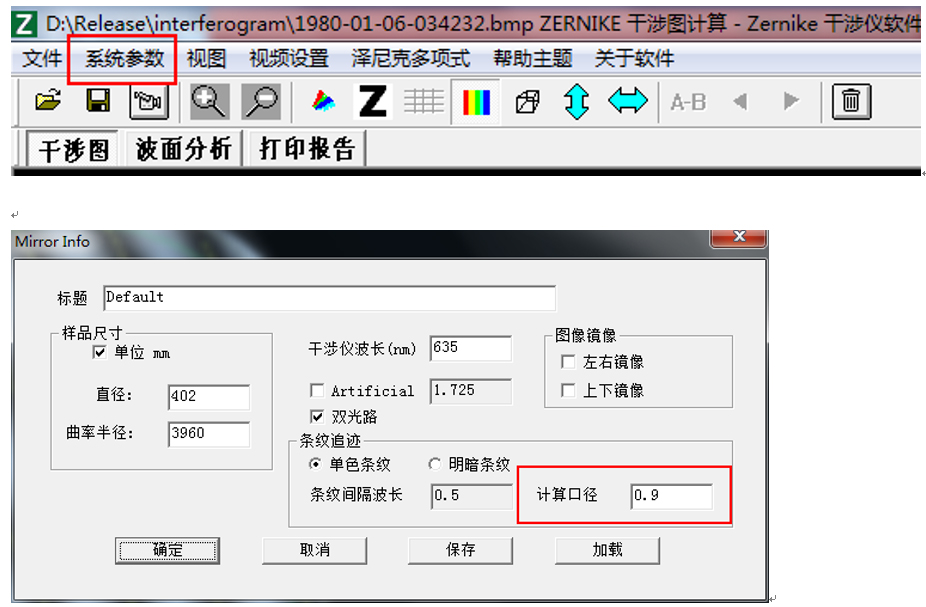 ?
?
?
After the selection of ellipse range is completed, the fringe tracing can be carried out according to "fringe tracing", and the interferogram can be calculated quickly by pressing the return key directly. The calculation results are given.
?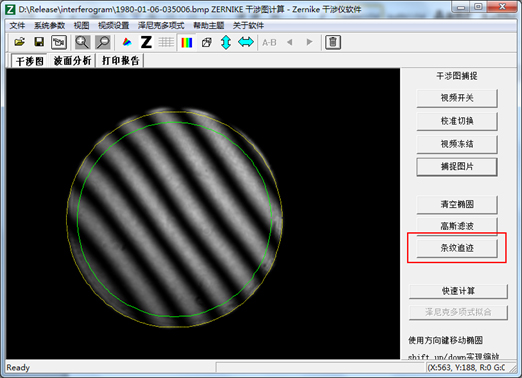
?After Zernike polynomial fitting, we can see the calculation results.

You can view, 3D map, contour map, section map and report map separately.
?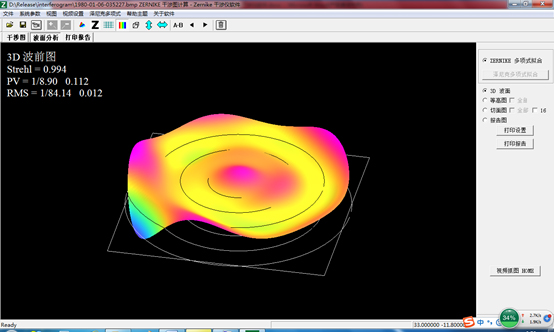
Report chart tab, which can be printed directly
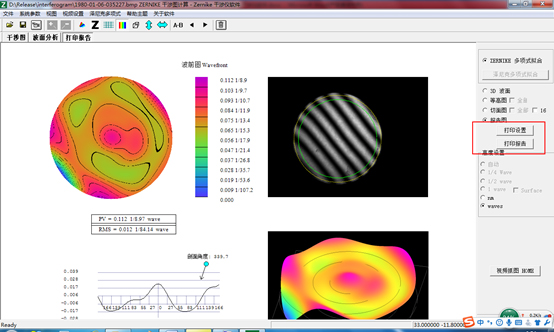
?
?
?
?
]]>